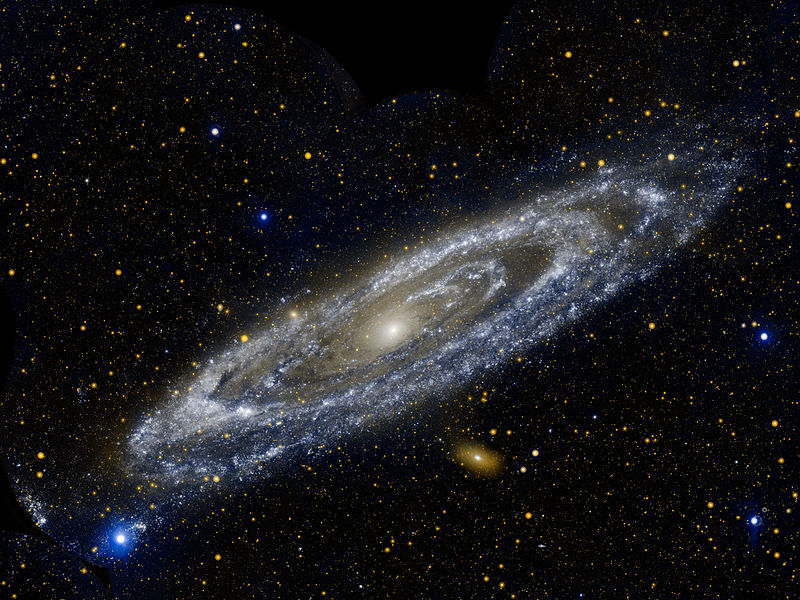7. Gravitation in galactic disks¶
So far, we have studied orbits and equilibria of spherical mass distributions in detail. We have seen that orbits in such mass distributions are rather simple, because the spherical symmetry leads to the conservation of angular momentum. This means that the orbital plane is fixed for any orbit and the motion within that plane is also further constrained. For static spherical mass distributions, the conservation of energy gives another strong constraint and closed orbits become quite simple: orbiting bodies oscillate in the radial direction between a close (pericenter) and far (apocenter) point from the center, while “looping” around the center in the azimuthal direction in a fixed direction (either clockwise or counter-clockwise). These radial and azimuthal oscillations are characterized by a radial and azimuthal frequency, which are typically not commensurate and orbits do not close. But for any reasonable galactic potential bodies will perform between 1 and 2 radial oscillations for each loop around the center. In the previous two chapters we discussed the dynamical equilibria in spherical potentials: because of the many conserved quantities, these equilibria are also rather simple. Despite their simplicity, we learned many properties of the mass distributions of approximately spherical galactic systems in the previous chapter: the Milky Way halo, dwarf spheroidals, and ultra-faint dwarf galaxies.
However, many of the galactic systems that we are interested in studying are manifestly non-spherical, but are much better approximated as flat disks. Take, for example, the galaxies in Figure 7.1.
Figure 7.1: NGC 5907 (NASA/JPL-Caltech/M.L.N. Ashby [Harvard-Smithsonian CfA]) and M31 (NASA/JPL-Caltech).
These are just two examples of large disk galaxies: NGC 5907 and M31 (our nearest large neighbor). Our own Milky Way is another example of a disk galaxy. Disk galaxies are ubiquitous in the Universe, making up about half of all large galaxies in the local Universe. Because these galaxies deviate strongly from spherical symmetry, they are not well described by the framework that we introduced in the previous few chapters and using the spherical approximation as a starting point is not a good approach for most properties in disk potentials. In this part, we therefore focus on the structure and dynamics of disk galaxies. We start on this in this chapter by discussing the observed structure of disk galaxies in more detail. Then we describe techniques for finding good gravitational potentials that describe these disk mass distributions, with a particular emphasis on mass distributions that are axisymmetric—meaning that they are symmetric with respect to rotations around the axis perpendicular to the disk. Such mass distributions are most easily described in cylindrical coordinates. Therefore, we write the density as \(\rho(R,\phi,z)\) for general densities and \(\rho(R,z)\) for axisymmetric densities (which do not depend on \(\phi\)); potentials are written as \(\Phi(R,\phi,z)\) in general and \(\Phi(R,z)\) for axisymmetric potentials.
An axisymmetric approximation to a disk galaxy ignores the effect of, e.g., bars or spiral structure, which we will discuss more in Chapter 20. We will see there that those features can be well described as perturbations to the overall axisymmetric description. Ellipsoidal distributions that are closer to spherical but non-axisymmetric require a different approach, because they are not well approximated as disks; we discuss the properties of triaxial, ellipsoidal potentials more in the next part, starting in Chapter 12.



